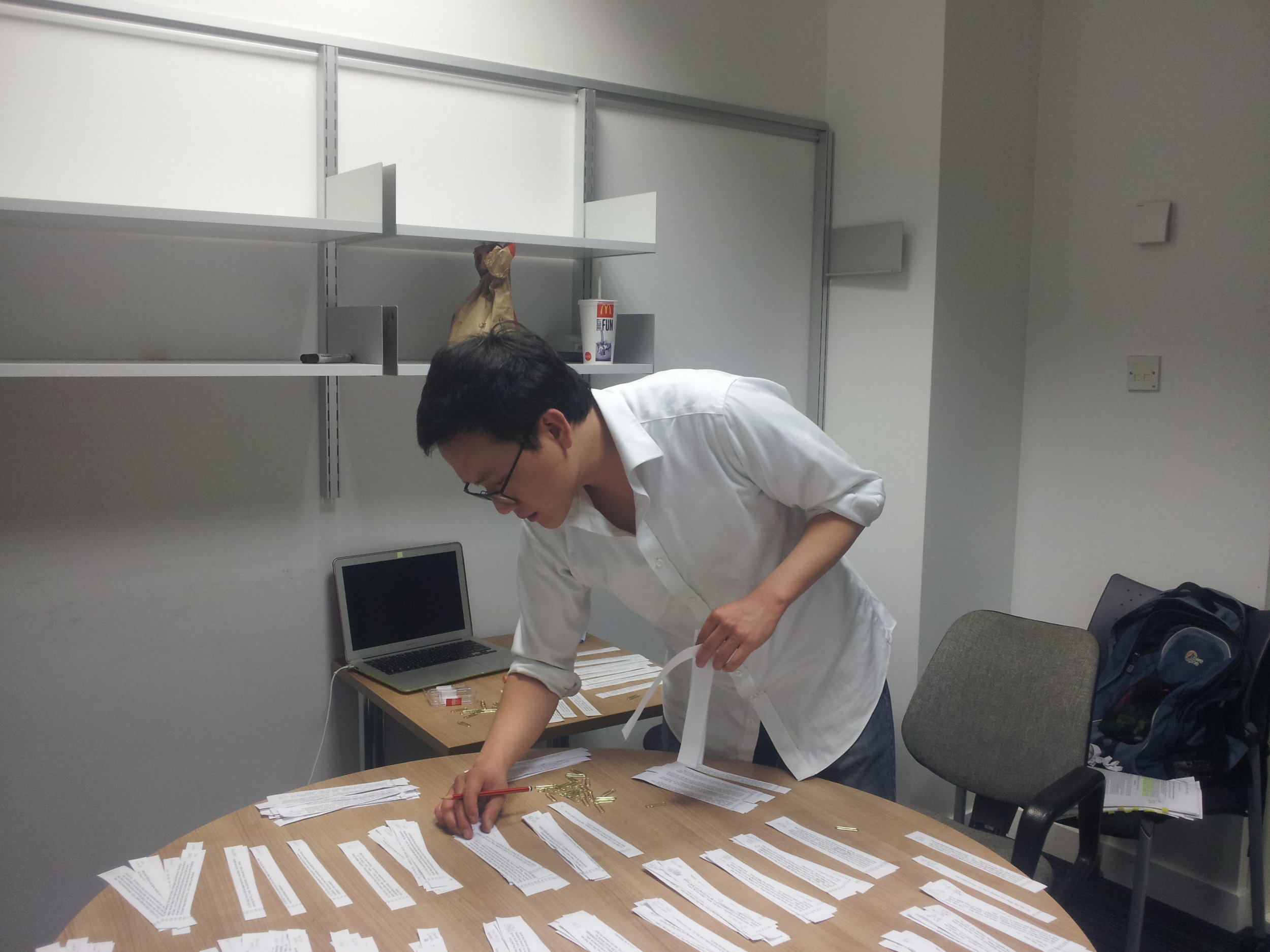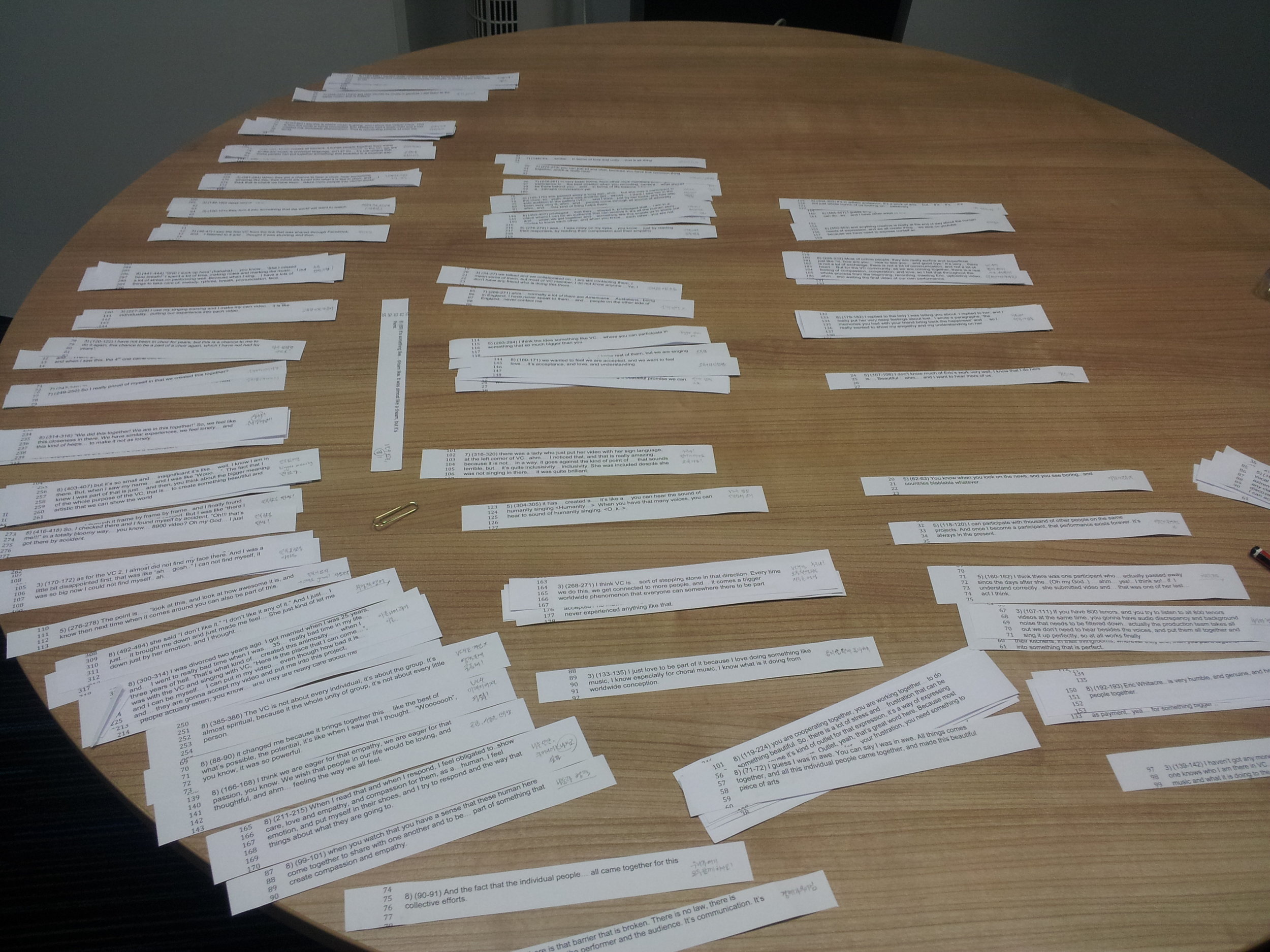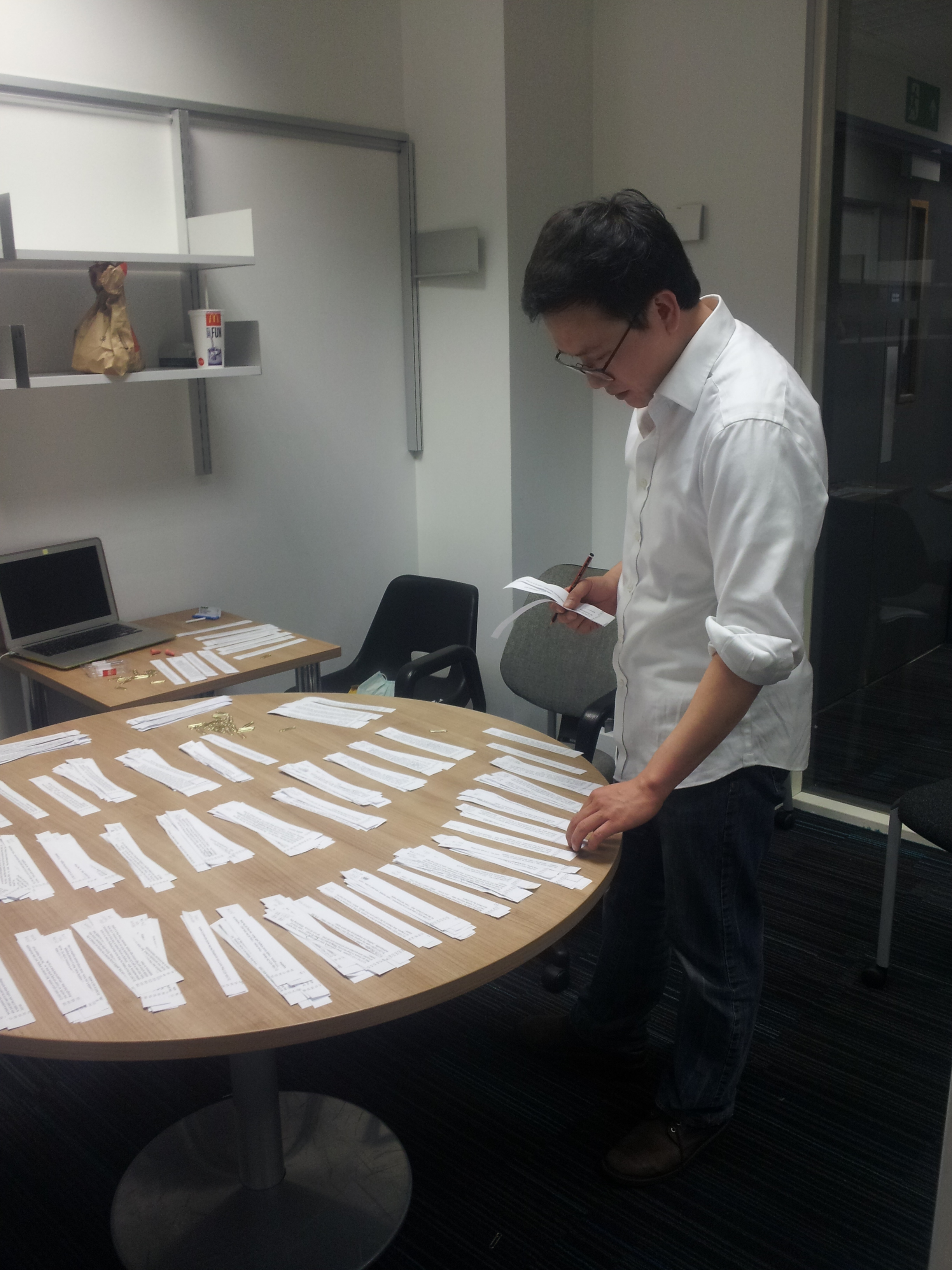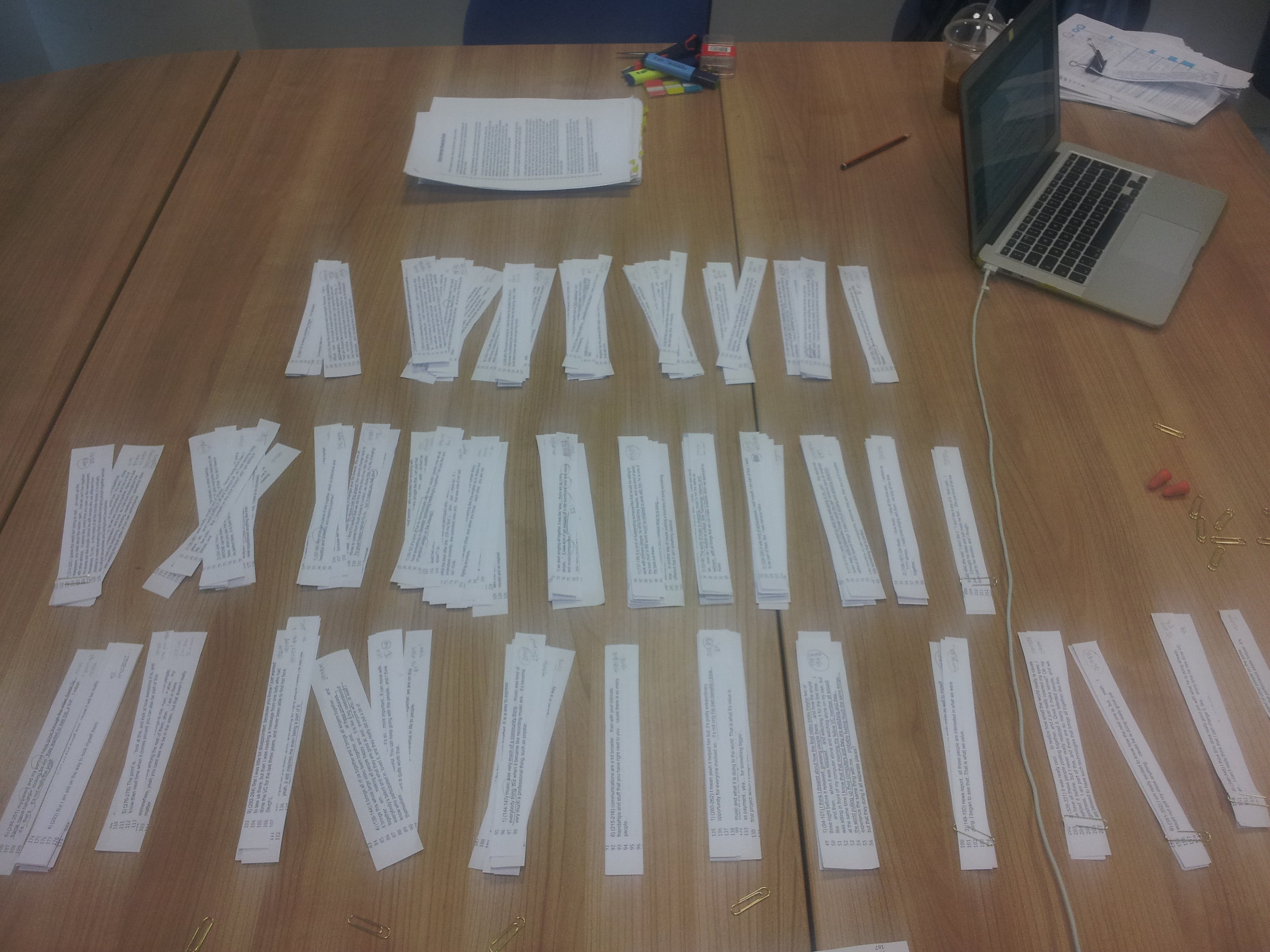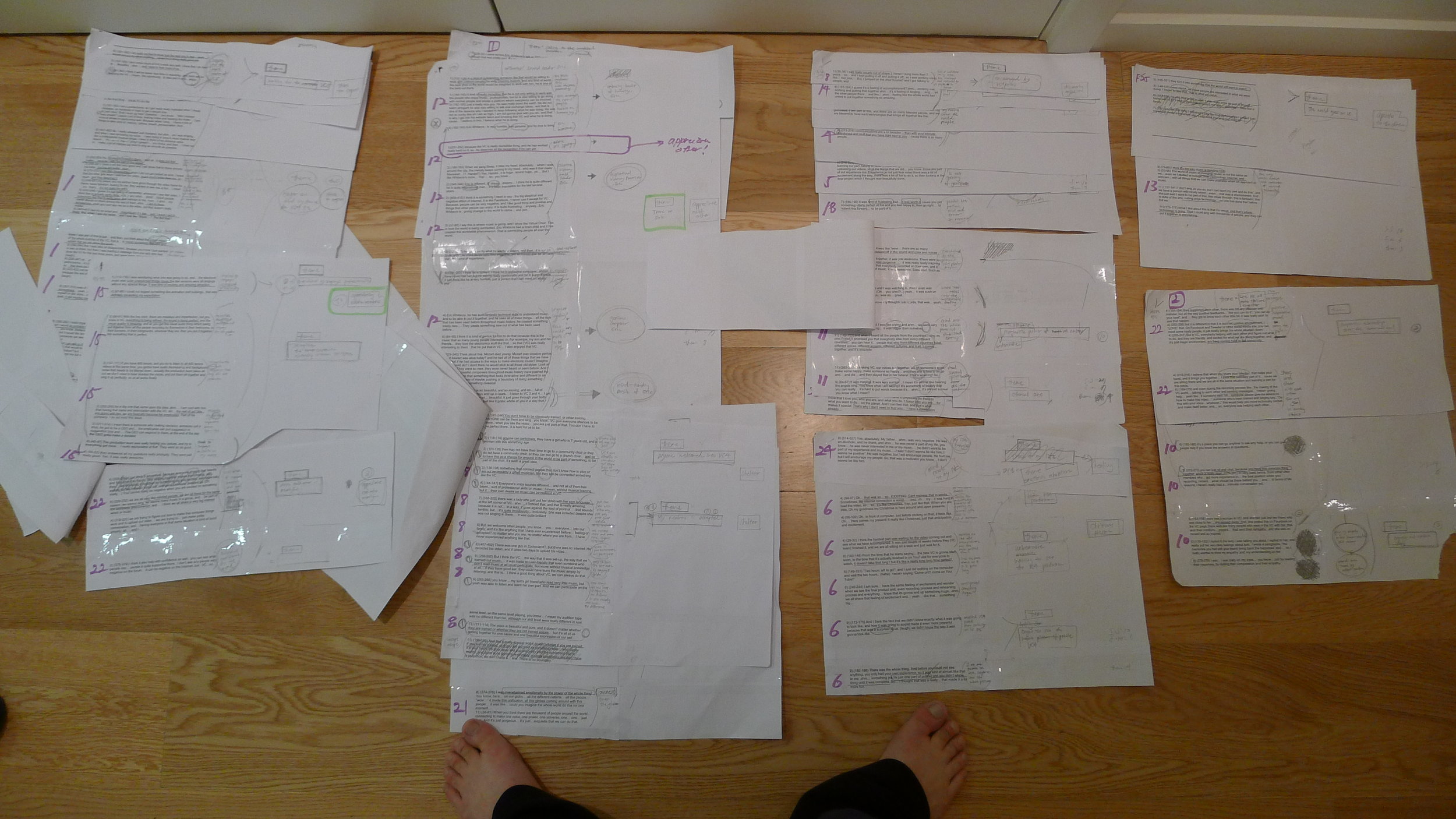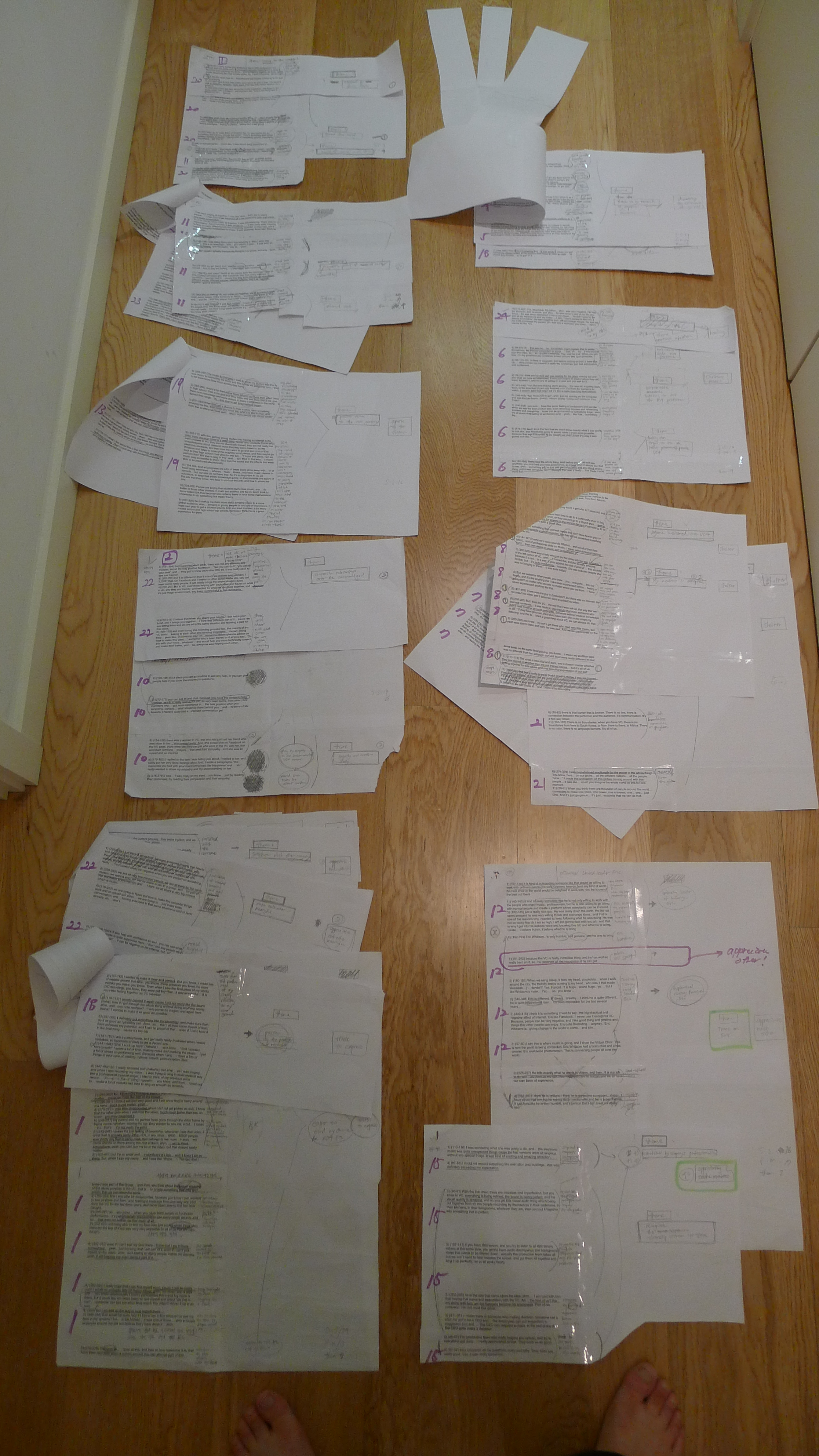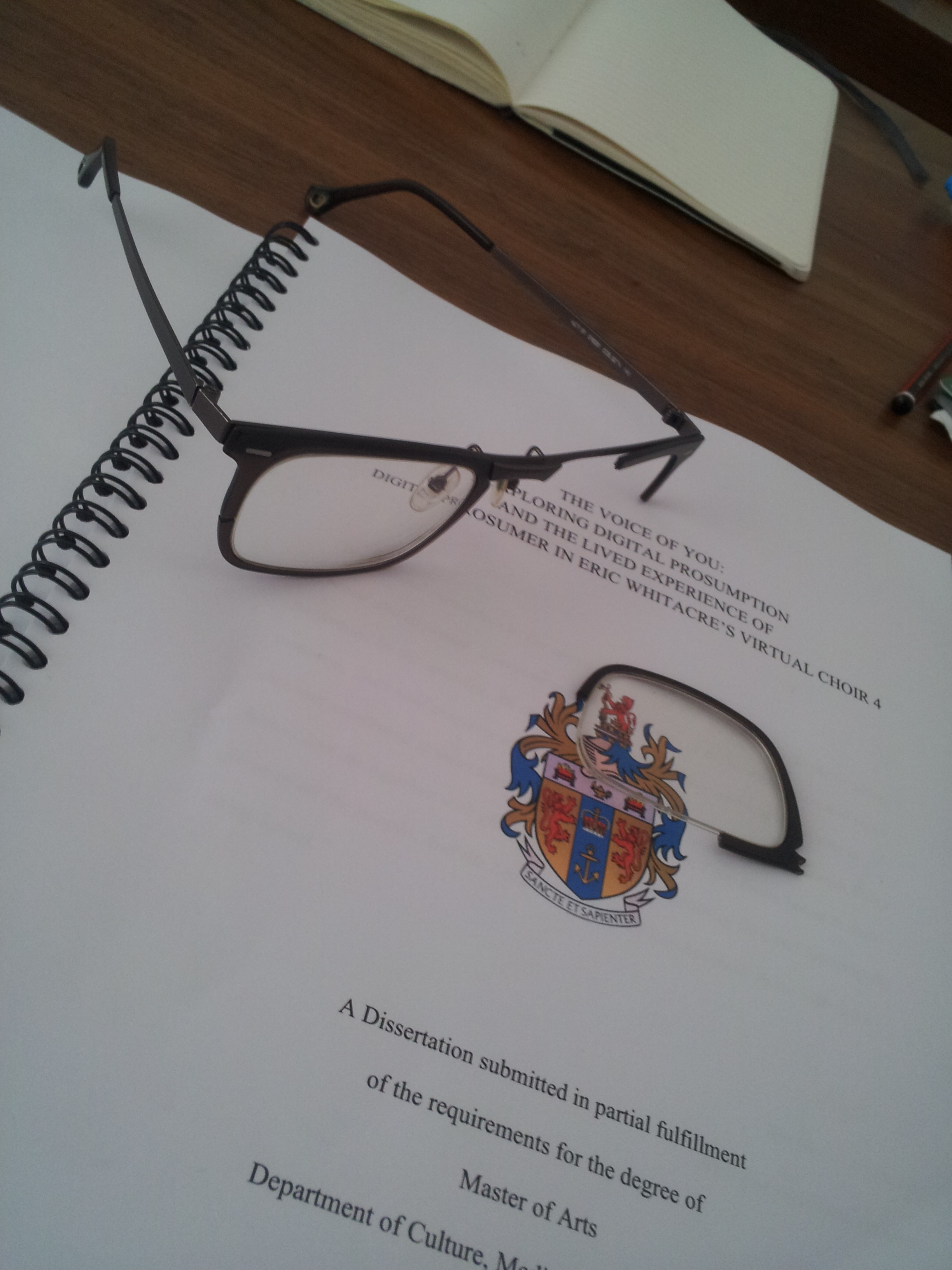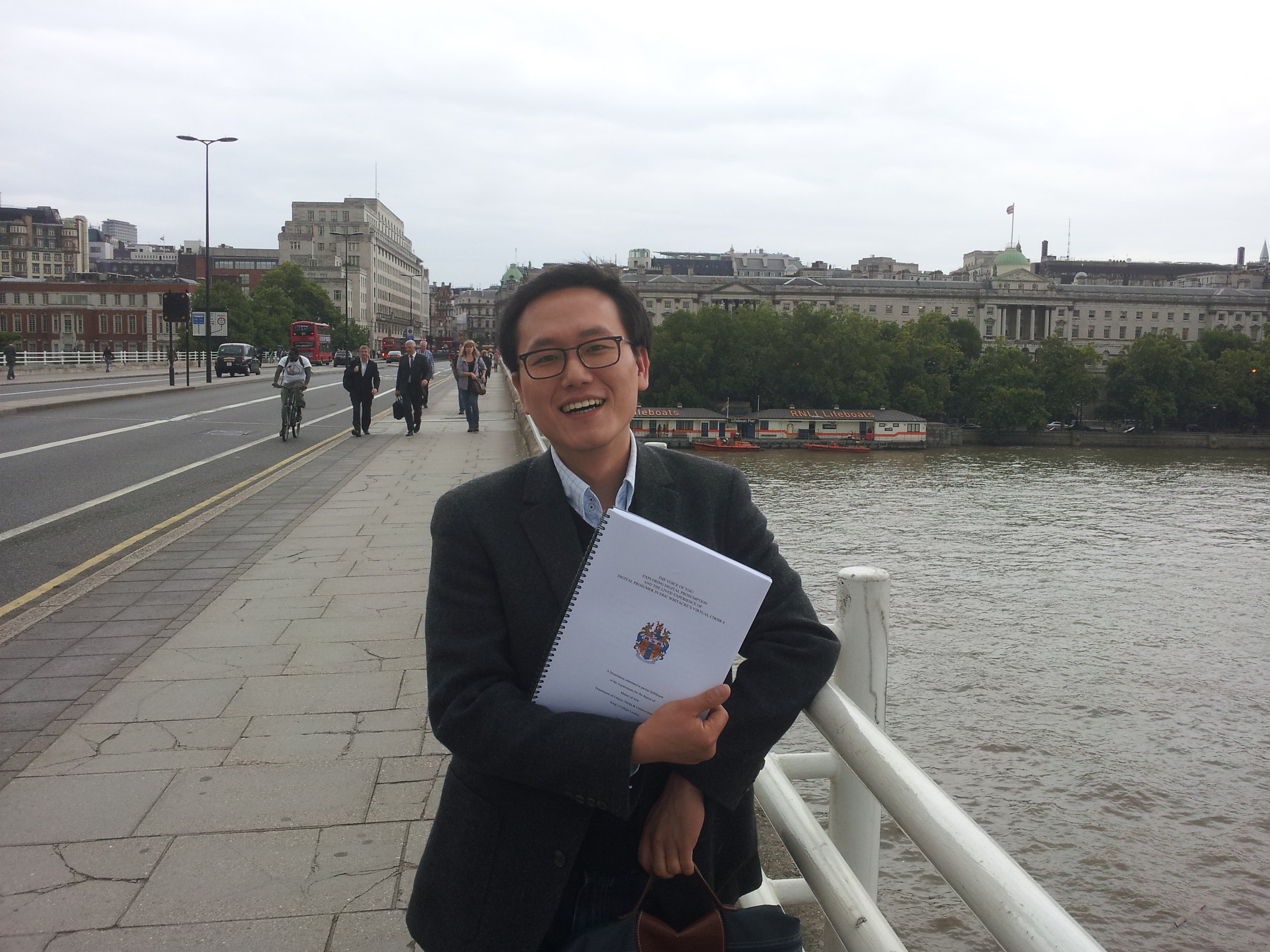Virtual Choir
UX Research
Exploring the Lived Experience of a Virtual Choir Participants on YouTube
in a Phenomenological Method.
My Role : UX Researcher
Duration : 9 months
Keyword : Digital Prosumption, Virtual Experience, Peer Collaboration, the Lived Experience, Phenomenology
Background
Introduction
Method : Phenomenology & Colaizzi Strategy (1978)
Findings
Implications & My Takeaway
Academic Reference
1. Background
I was an opera and musical production manager for around 7 years.
my work was to observe cultural and social phenomena and to create a capital-centric stage contents to meet the needs of the audience in that cultural and social sphere.
Back then, I used to hold a divisive top-down perspective on artist-audience and producer-consumer, regarding the production and consumption of culture, knowledge, and Information.
However, YouTube strikingly embarrassed me, because
people with non-professional trainings or credentials started making debuts on the platform since 2006.
Back then, I used to call them as "silent audience", but I realised that their online activities were way more powerful and meaningful.
It was a fundamental challenge not only to my expertise, but also to the previous production and consumption system of culture and information. (See the diagram below)
I researched this phenomenon with an UX-centric effort, which later on, led me to the world of UX Design and Research with a strong belief that we can augment the quality of our lives by designing technologies and experience, particularly in media sector.
On Feb 2013 in London UK, I reach out to Eric Whitacre. (the VC4 project leader & 2012 Grammy Award Winner)
I focused on the YouTube creators of Eric Whitacre's Virtual Choir 4 (VC4), and I narrowed down my research goal to explore the Lived experience of VC4 creators.
Eric and I had extensive discussion about the research, and I obtained his permission to access the group of creators for research data generation purpose.
2. Introduction
2.1. Eric Whicatre's Virtual Choir 4 (VC4)
Eric Whitacre's Virtual Choir 4 (VC4) is produced and staged on YouTube throughout the co-creation process between Eric Whitacre and his media engineers and 5906 VC4 participants from 101 countries.
Voluntary participants from 5-year-old kid to 98-year-old granny
Use their smartphone or camcorder, to record the choir parts each participant took
Eric Whitacre and Media Engineers create the final version of choir
Organically-collaborative process between two parties through the co-creation
All VC4 participants "prosume" their experience and the final virtual choir content.
2.2. Research Goal & Questions
As a traditional performing arts manager in theatre setting, I had macro "Why" and "How" questions about the prevalent practice of civic participation on YouTube.
So, I conducted a purely qualitative research that explores the experience and the lived experience of VC4 participants during the process of their co-creation and prosumption activities.
Large Questions
What is the cores and the essence (the Lived experience) of the VC4 participants?
What are the layers of the participants' experience?
How are the layers formulated and interact with each other?
How do the layers affect their behavior, emotion, and feeling in daily lives?
Research Questions
What drives the participants to participate in the collective virtual project?
How do they feel during and after the participatory debut process?
How do they perceive their labour, being, and participation in the peer production practice?
What do they expect through the participatory practice?
How they feel when they find and see themselves presented on the final YouTube show-case?
2.3. Method at a Glance
To explore these questions, this research harnessed a phenomenological qualitative research method, within the philosophical paradigm of Edmund Hussurl's phenomenology (Hussurl, 1970) and with Colaizzi data analysis strategy (1978) applied.
Briefly, I chose this research method because Phenomenology (see 3. Method for details):
is useful to illuminate and visualize the experiences created in daily setting
is good to uncover a shared communal experience
provides a fundamental paradigm for any of current qualitative research methods (Lee, 2011)




